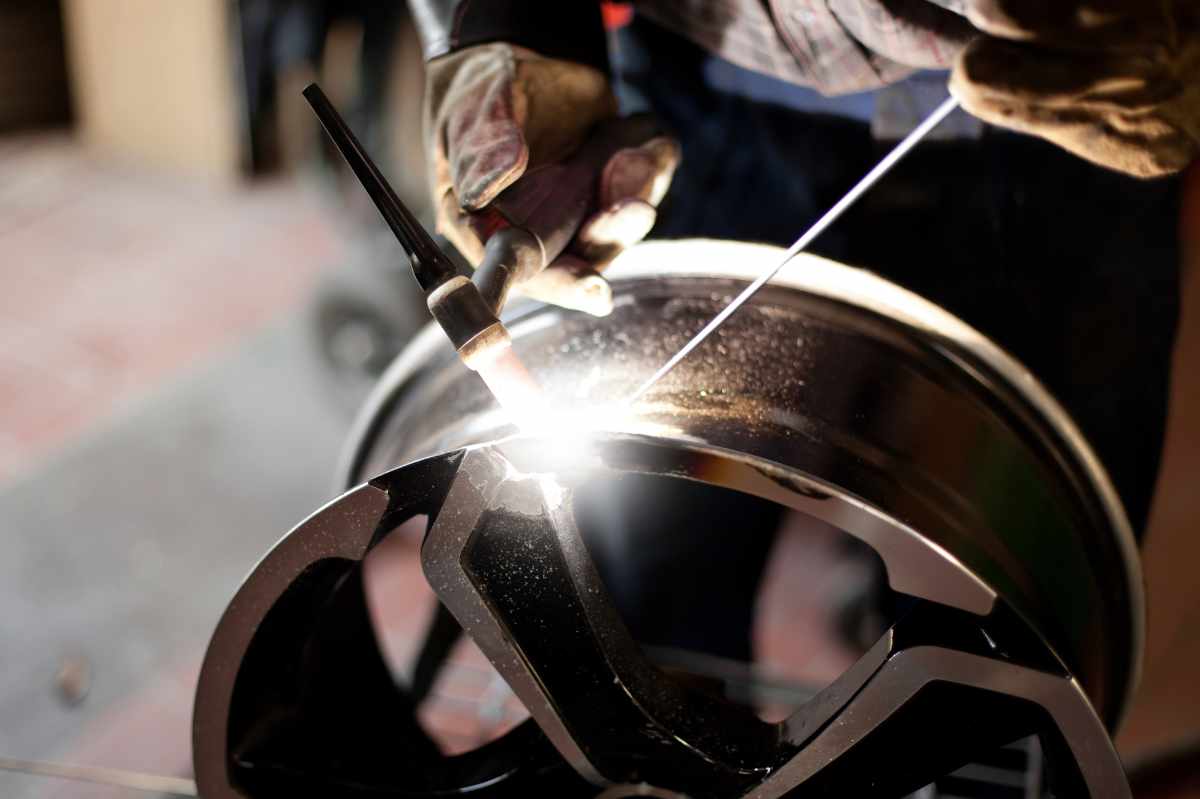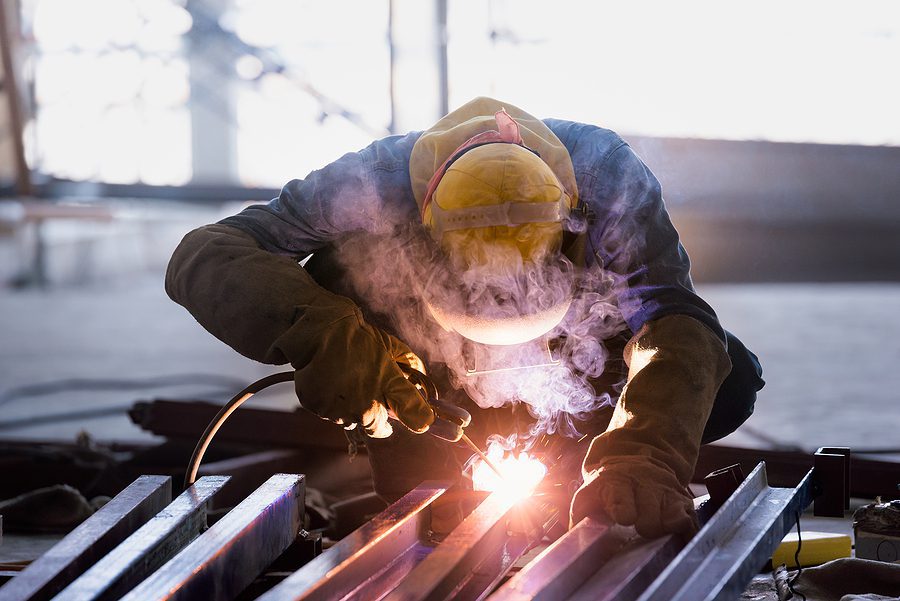Montana Mobile Welding and Repair Welding shares strategies on addressing heat distortion effectively
Common Welding Repair Issues and Just How to Address Them Successfully
Welding repair services commonly experience a series of issues that can threaten the integrity of the end product. Typical problems include poor penetration, porosity, and misalignment, to name a few. Each problem presents special difficulties that require details techniques for resolution. Understanding these concerns is vital for welders aiming to enhance their skills and end results. This discussion will explore these usual welding repair concerns and efficient techniques to address them.
Insufficient Infiltration
Inadequate infiltration occurs when the weld steel stops working to totally fuse with the base product, leading to weak joints and possible architectural failings. This issue commonly comes from not enough warm input, wrong electrode angle, or improper welding rate. Welders may experience poor penetration as a result of a miscalculation of the necessary criteria for a particular product thickness or kind. Additionally, contamination on the base product's surface can prevent efficient bonding, intensifying the issue. To attend to insufficient infiltration, welders should assure appropriate settings on their devices and maintain a tidy job surface. Normal examination of welds is recommended to identify any deficiencies early, enabling timely adjustments and the avoidance of jeopardized structural integrity in welded assemblies.
Porosity
Porosity is a common problem in bonded joints that shows up as tiny gas bubbles entraped within the weld steel. This flaw can compromise the stability of the weld, bring about minimized strength and possible failing under stress. Montana Mobile Welding and Repair Belgrade Welding. Porosity usually arises from contamination, moisture, or improper welding strategies, which allow gases to escape right into the liquified weld pool. To deal with porosity, welders ought to ensure proper surface preparation, maintain a tidy workplace, and use suitable welding parameters. Additionally, picking the ideal filler product and securing gas can mitigate gas entrapment. Normal examination and testing of welds can aid recognize porosity early, ensuring prompt corrective activities are taken, thereby maintaining the top quality and integrity of the welded framework
Misalignment
Imbalance in welding can occur from numerous elements, including incorrect arrangement and thermal expansion. Understanding the source is important for effective resolution. Numerous correction strategies are offered to straighten components and ensure architectural integrity.
Reasons for Misalignment
Welding misalignment often originates from a variety of underlying problems that can jeopardize structural integrity. One primary reason is incorrect fit-up of elements before welding, which can lead to voids and irregular surface areas. Variants in thermal growth throughout the welding process can likewise lead to distortion, especially if the products being joined have different coefficients of development. In addition, poor securing and fixturing might fall short to hold elements firmly in area, bring about movement during welding. Poorly conserved equipment, including welding makers and devices, might introduce disparities in the weld grain, more adding to misalignment. Operator error, stemming from inadequate training or experience, can additionally play a considerable duty in developing misaligned welds.

Adjustment Methods Offered
Dealing with imbalance properly calls for a combination of rehabilitative strategies customized to the specific issues available. One usual approach is using components or jigs to hold elements in the right position during welding, making certain regular placement. Furthermore, preheating the products can help in reducing distortion and boost fit-up. For substantial imbalance, mechanical adjustment methods, such as utilizing hydraulic jacks or clamps, can be utilized to fix the placement before welding. Post-weld warm therapy may additionally be essential to ease stress and anxieties triggered by imbalance. Cautious assessment and adjustment during the setup phase can avoid imbalance issues from coming to be significant issues, promoting a smoother welding procedure and improving total structural honesty.
Distortion
Distortion is a common difficulty in welding that can emerge from different variables, consisting of unequal cooling and heating. Comprehending the reasons for distortion is necessary for carrying out efficient avoidance methods. Resolving this concern not only enhances structural stability but additionally improves the overall high quality of the weld.
Reasons of Distortion
When subjected to the extreme warmth of welding, products commonly undertake modifications that can bring about distortion. This phenomenon largely develops from thermal development and contraction throughout the welding procedure. As the weld location warms up, the material broadens; upon cooling, it contracts, which can develop inner anxieties. On top of that, unequal heating across a workpiece can worsen these stresses, causing bending or bending. The kind of material likewise plays a significant role; metals with differing thermal conductivity and coefficients of expansion might respond differently, causing unforeseeable distortions. Bad joint design and inadequate fixturing can contribute to imbalance throughout welding, raising the chance of distortion. Understanding these causes is vital for effective welding repair work and prevention techniques.
Avoidance Techniques
Reliable prevention techniques for distortion during welding focus on managing warmth input and making sure appropriate joint style. Keeping a regular heat input assists to lessen thermal expansion and tightening, which can bring about distortion. Making use of strategies such as pre-heating the workpiece can also decrease the temperature slope, advertising uniform home heating. In addition, choosing appropriate joint designs, such as T-joints or lap joints, can improve stability and minimize stress and anxiety focus. Applying correct fixturing to safeguard the workpieces in area even more aids in keeping alignment additional hints throughout the welding process. Lastly, staggered welding sequences can disperse heat extra evenly, stopping localized distortion. By applying these methods, welders can considerably decrease the probability of distortion and improve the investigate this site total quality of their welds.
Fracturing
Fracturing is a common concern come across in welding repairs, typically arising from various variables such as incorrect air conditioning rates, product selection, or insufficient joint preparation. The event of splits can substantially compromise the integrity of the weld, resulting in possible failings during procedure. To address this problem, welders should initially evaluate the origin, ensuring that materials are suitable and appropriately selected for the details application. In addition, managing the air conditioning price throughout the welding process is important; fast air conditioning can cause stress and cause splitting. Appropriate joint layout and preparation also add to reducing the danger. Implementing these approaches can enhance weld high quality and durability, ultimately decreasing the probability of cracking in finished weldments.

Incomplete Blend
A substantial concern in welding repair work is insufficient combination, which occurs when the weld steel does not adequately bond with the base product or previous weld passes - Fabrication. This issue can lead to weak points in the joint, potentially compromising the stability of the bonded structure. Variables adding to insufficient combination consist of not enough warm input, improper welding technique, and contamination of the surfaces being signed up with. To address this issue effectively, welders ought to assure proper pre-weld cleansing and surface area preparation, along with readjust their welding specifications to attain sufficient infiltration and blend. Normal assessment throughout the welding procedure can also assist recognize insufficient blend early, enabling for prompt rehabilitative measures to improve the overall quality of the weld
Overheating
While welding repairs can enhance structural integrity, overheating presents a substantial challenge that can cause material degradation. Excessive heat during welding can modify the mechanical buildings of steels, leading to reduced toughness, enhanced brittleness, and warping. This sensation is particularly essential in high-stress applications where structural integrity is vital. Determining getting too hot can entail visual examinations for staining or distortion, as well as keeping track of temperature level throughout the welding process. To reduce the risks associated with getting too hot, welders ought to use ideal methods, such as controlling warmth input, changing travel speed, and utilizing suitable filler materials. Furthermore, carrying out pre- and post-weld warm treatments can help restore product buildings and improve the general high find out here quality of the fixing, guaranteeing lasting performance and safety.
Often Asked Questions
What Are the Usual Indications of a Welding Flaw?

Exactly How Can I Examine My Welds for High quality?
To test welds for high quality, one can utilize visual assessments, ultrasonic screening, and radiographic approaches. Each method ensures structural honesty, identifies defects, and confirms adherence to defined criteria, inevitably improving the dependability of the welded joints.
What Safety Safety Measures Should I Take While Welding?
When welding, one should prioritize safety by wearing appropriate individual protective equipment, ensuring appropriate ventilation, protecting flammable products away, maintaining a clean work area, and knowing surroundings to avoid accidents and injuries.
Can I Fix a Weld Without Redesigning the Entire Joint?
Repairing a weld without remodeling the entire joint is feasible, depending on the damages (Montana Mobile Welding and Repair Belgrade). Strategies such as grinding, including filler product, or utilizing a welding procedure can effectively attend to particular defects while preserving the surrounding framework
What Tools Are Vital for Reliable Welding Repair Works?
Essential devices for reliable welding fixings include a welding maker, cord brush, mill, protective gear, clamps, and filler products. Each tool plays an important duty in guaranteeing high quality and safety throughout the repair procedure. Porosity usually emerges from contamination, dampness, or inappropriate welding techniques, which allow gases to run away into the liquified weld pool. Inadequately conserved equipment, including welding makers and devices, might present disparities in the weld grain, additional contributing to imbalance. When subjected to the extreme heat of welding, products commonly go through changes that can lead to distortion. Fracturing is an usual problem come across in welding repair services, usually resulting from numerous variables such as incorrect cooling rates, product option, or inadequate joint prep work. A considerable concern in welding repairs is insufficient combination, which takes place when the weld steel does not effectively bond with the base product or previous weld passes.